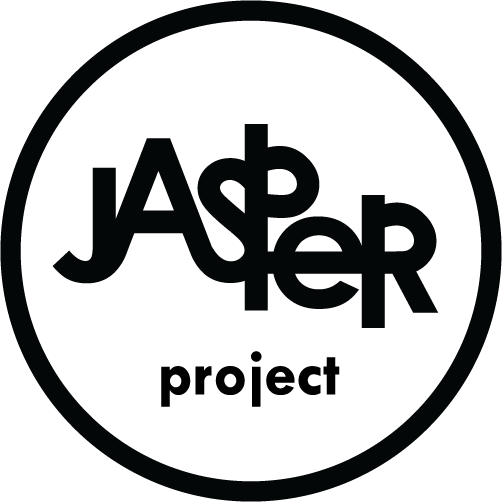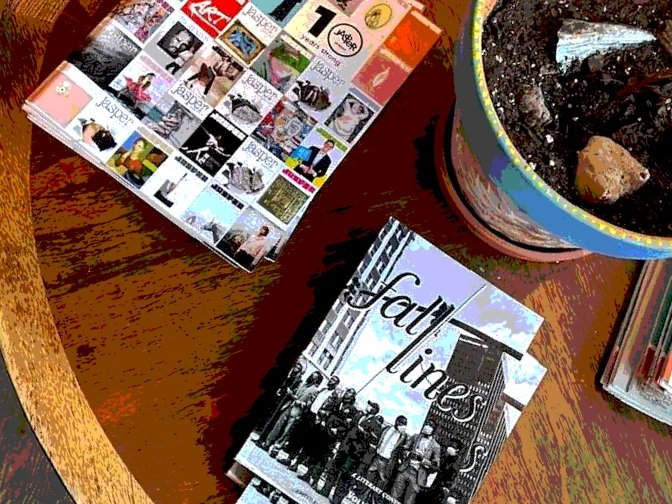Thank you!
As we approach Midlands Gives next week and you make your decisions on where to invest your gifts, we’d like to report back to you on how the Jasper Project has used the tokens of your kindness since last year.
First and foremost, we have published two 64-page issues of Jasper Magazine and we have another issue in design now that will be in your hands in a matter of weeks. These issues have reviewed, previewed, examined, explained, memorialized, and celebrated more than 100 of our Midlands-based artists. The issue coming your way will look at the art of Lindsay Radford, Quincy Pugh, Rebecca Horne, Lucy Bailey, Tyrone Geter, Diko Pekdemir-Lewis, Mike Miller, Jane Zenger, Josetra Baxter, Tamara Finkbeiner, Terri McCord, Juan Cruz, Saul Seibert, Rex Darling, Tam the Viibe, Desiree, Katera, Lang Owen, Hillmouse, Space Force, Candy Coffins, Admiral Radio, Carleen Maur, the mission of SCAC ED David Platts, and the international efforts of Columbian-founded dance organization, Artists for Africa.
We have published a dual volume of Fall Lines – a literary convergence, celebrating the prose and poetry of 60 SC writers, awarding the Broad River Prizes for Prose to Randy Spencer and Kasie Whitener and the Saluda River Prizes for Poetry to Angelo Geter and Lisa Hammond, while at the same time celebrating the photography of Crush Rush. And we have issued a call for Fall Lines 2022.
We have conceptualized and implemented a competition for the publication of a chapbook for a SC BIPOC writer in honor of Lizelia Augusta Jenkins Moorer and the winner is being announced and celebrated as we speak. Board member Len Lawson brought us this beautiful idea and will edit the book which will be published this fall.
We have implemented another issue of the Play Right Series, with new board member Jon Tuttle issuing a call for an original, unpublished one-act script, overseeing the adjudication, and selecting young playwright Colby Quick as the winner. Nine community producers have joined director Chad Henderson and his cast to learn more about the page to stage process for theatre arts, and we will invite you to join us for a staged reading of Moon Swallower in August.
We have featured one artist per month in our virtual Tiny Gallery under the direction of board member Christina Xan, including artists whose work you know very well and artists whose work we think you’ll be happy to learn about including Gina Langston Brewer, Adam Corbett, Bohumila Augustinova, and more.
Because of the dedication of our amazing web maven and board member Bekah Rice, we have a website that is comprehensive, up-to-date, easy to maneuver, and quite lovely, if we do say so ourselves. Since last spring we have brought the good news of Columbia arts to you via more than 160 Online Jasper (previously blog) posts. And counting.
We threw a fabulous party to celebrate the 10th birthday of Jasper Magazine, and, with board member Laura Garner Hine’s incredible work, we welcomed more than 30 artists to demonstrate and celebrate their talents.
We have shown art for Columbia artists at Jasper Galleries that include Harbison Theatre, Motor Supply, also under the management of Laura Garner Hine, and our sidewalk gallery at the Meridian building conceptualized and realized by board member Bert Easter.
We have included the work of 25 (and counting) brilliant SC writers under the auspices of the Jasper Writes project, implemented in conjunction with Jasper poetry editor, Ed Madden.
We have helped a new non-profit spread its wings by serving as the fiscal agent to Columbia (Summer) Repertory Dance Company, which is now its own entity. Bye bye little birdie!
We have launched several new projects including:
A new weekly music column by Kevin Oliver called THE BEAT;
First Thursday featured artist exhibitions at Sound Bites Eatery – with artists including Marius Valdes, Ginny Merritt, and Quincy Pugh lined up for the next few months, and Alex Ruskell showing his work in May;
The monthly Jasper Poetry Salon hosted by Al Black at the One Columbia Co-Op;
Another monthly singer/songwriter happening called Front Porch Swing, also by Al Black, also at the One Columbia Co-Op.
Last Thanksgiving, we launched a weekly newsletter called Sundays with Jasper that keeps the community up-to-date on Jasper news and arts happenings in general. You can sign up for Sundays with Jasper here.
Of course, none of this could have been done without the support of our community and your recognition of the vital role grassroots arts organizations play in the landscape of an arts community.
We continue to vow to you that every penny that comes the way of the Jasper Project will go directly back into the greater Midlands area arts community as we keep our overhead close to zero, save for insurance and rent (when we have a brick-and-mortar home.) None of your generous funding goes to payroll, taxes, or nice desks and chairs. We work from our homes and from our hearts.
It's worked this way for 10 ½ years. We’re keeping at it as long as you let us.
Thank you for your continued support.
Cindi Boiter, Wade Sellers, and the entire board of the Jasper Project and staff of Jasper Magazine











